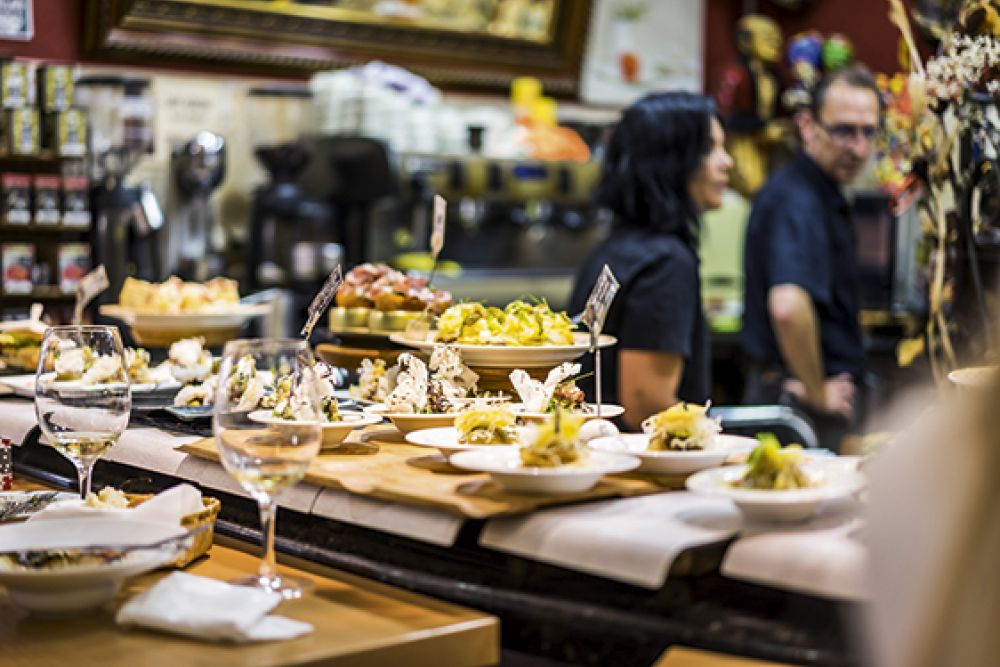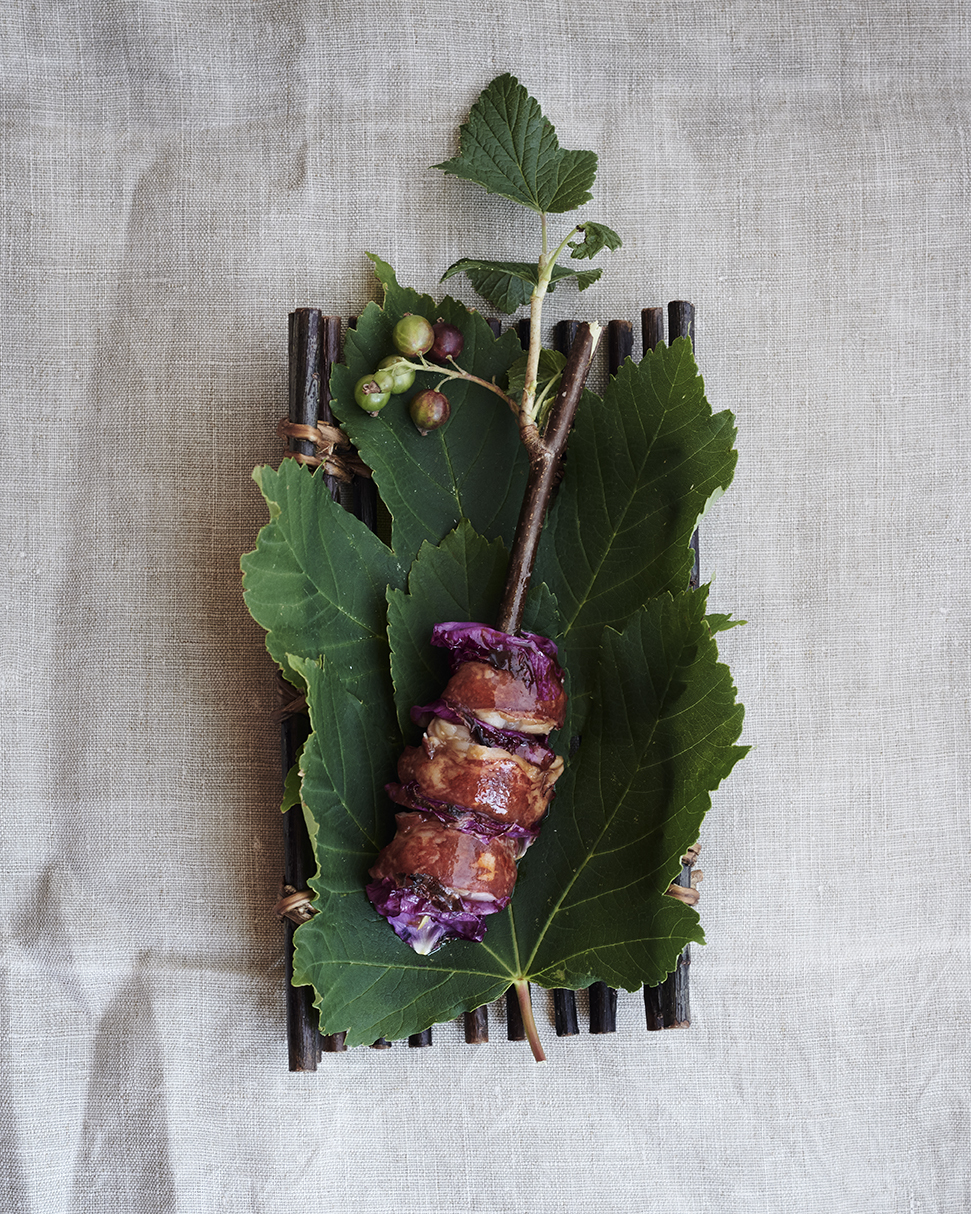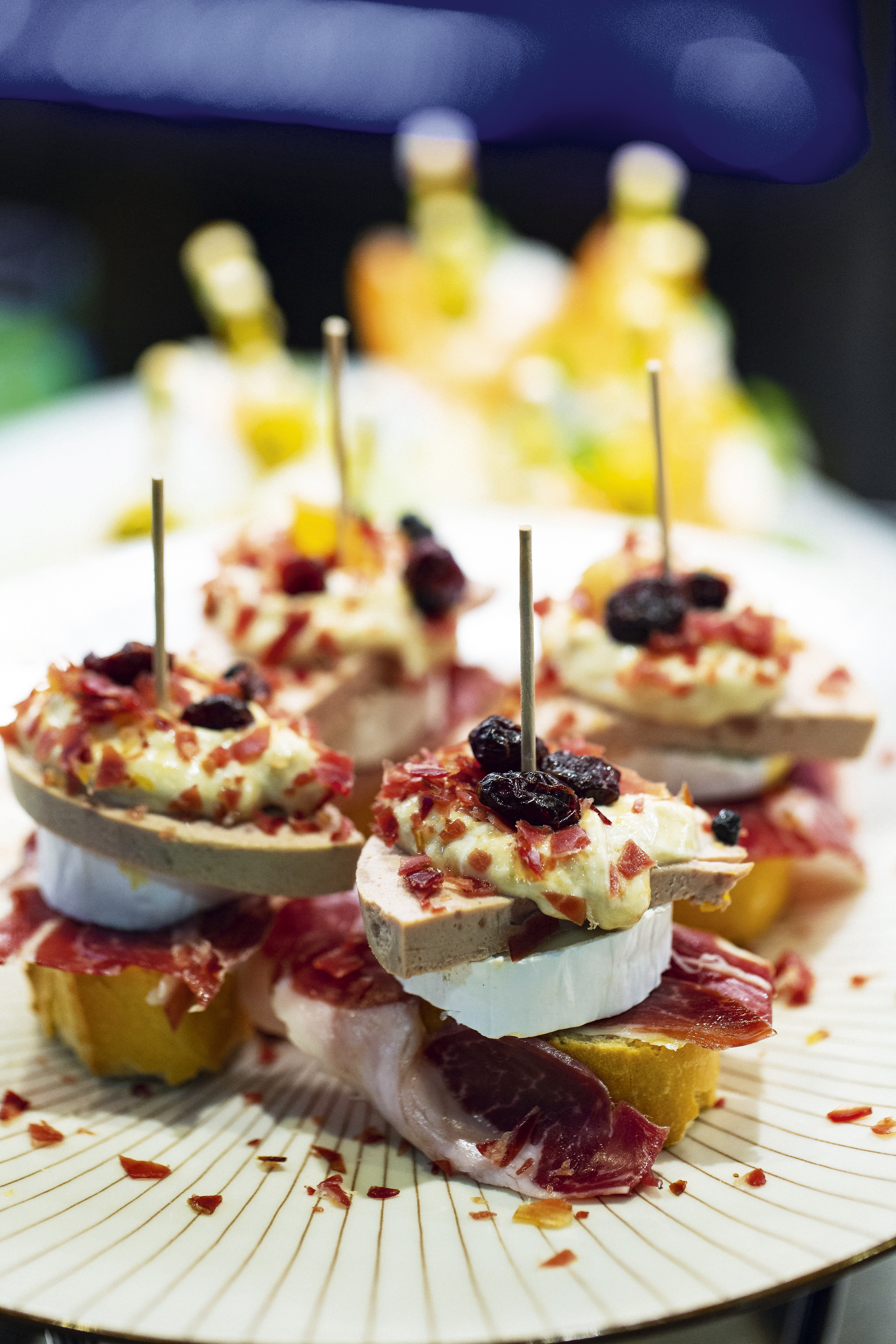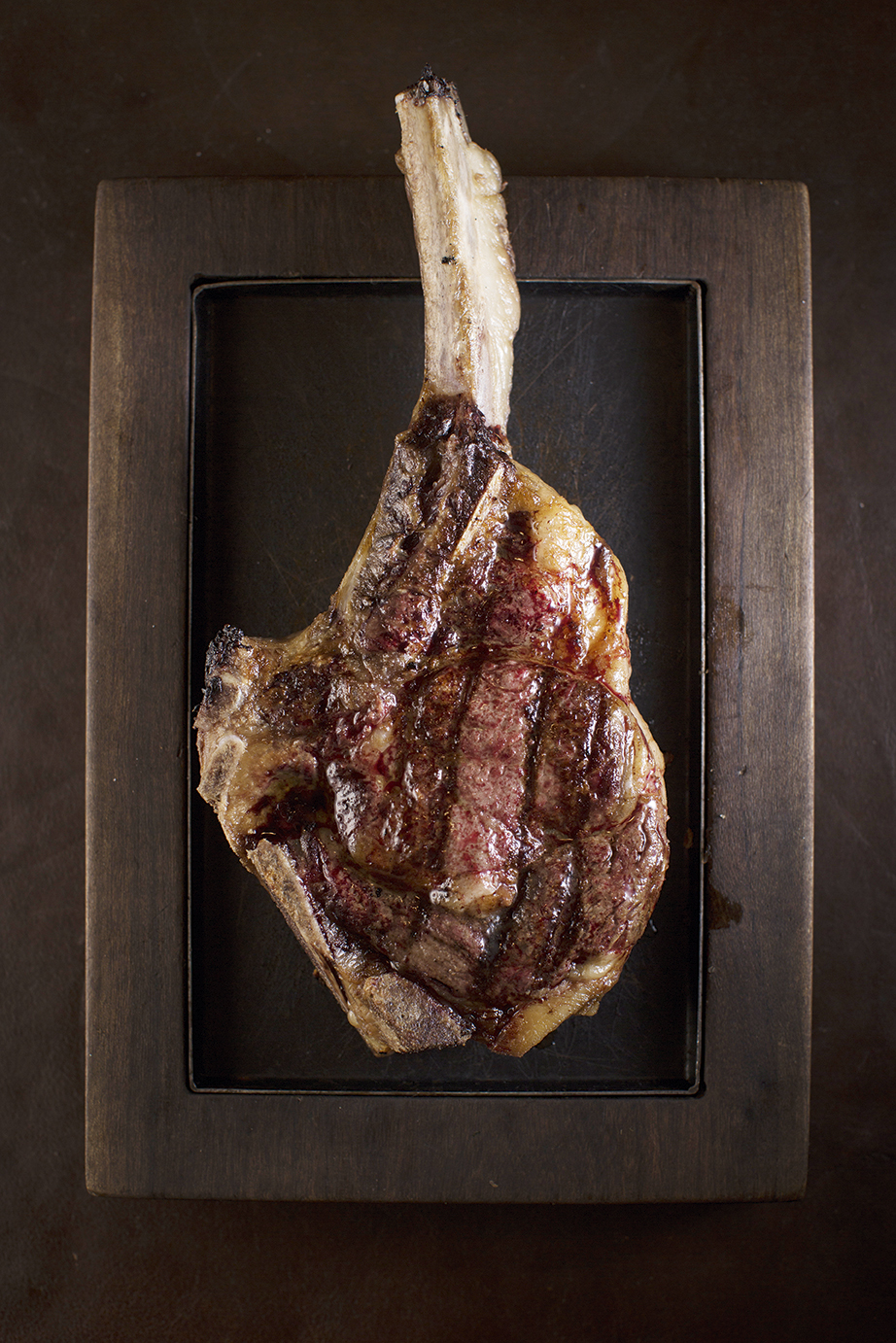Taste the world – top food experiences
The world's top food experiences are memorable because they come with a real sense of place. Here are four must-try culinary moment for your bucket list and it isn't always about fine dining.

The world's top food experiences are memorable because they come with a real sense of place. Here are four must-try culinary moment for your bucket list and it isn't always about fine dining.
Lauded restaurant Noma may have made foraging in Denmark famous, but cooking with produce plucked from the wilds, from cicely to salsify, is now commonplace in kitchens across the land
Juicy, dark dewberries. Fragrant, leafy sweet cicely. Light, umami-rich yellowfoot mushrooms. Not sounding familiar? Don’t worry – they’re all foraged ingredients that are only rarely enjoyed, and unless you’ve spent time eating your way around Denmark, there’s a fair chance you won’t have tried them.
World-famous restaurant Noma was just the beginning. The past two decades have seen a revolution in Danish cuisine, with chefs up and down the country celebrating their landscape with dishes that are laser-focused on provenance, sustainability and seasonality. A big part of this ‘New Nordic’ cuisine, as it’s commonly referred to, is the desire to redefine eating habits with long-forgotten or lesser-known ingredients – and many of these are foraged rather than farmed.
With its hooked landmass and spray of islands, all thrust out into bracing seas, Denmark has endless summer nights and snow-blanketed winters; surf-beaten beaches and dense forests. The cooler climes and markedly different seasons have allowed plenty of unique wild things to flourish. But while foraging has been permitted for centuries – on public land or private areas along footpaths – it wasn’t until Noma started grabbing headlines in the early 2000s with its locavore approach to cooking that the rest of the world really took notice.
Chef René Redzepi revolutionised the typical restaurant ingredients list, treating the likes of tart sea buckthorn, textural bladderwrack seaweed and savoury crab brittlegill mushrooms with love and care. Now the Copenhagen restaurant has changed form, but René continues to work with foragers such as Thomas Laursen at Wild Fooding wildfooding.com to celebrate the myriad local landscapes through food.
And, 18 years after Noma first opened, the trend for foraging has expanded across the country. Blotted off the coast of Sweden, the Danish island of Bornholm – all charming fishing villages, verdant valleys and dramatic coastline lined with cliffs and sandy dunes – has a shining example in Kadeau a relaxed beachside eatery. Here, overlooking delectable panoramas of blue sea, head chef and co-founder Nicolai Nørregaard shows off the island’s bounty just as readily. Every Sunday is foraging day, where chefs pick sweet cicely flowers for oozy syrup; giant nobilis fir cones for savoury-sweet desserts; and baby spruce cones for pickling. They use wood ants as an unusual, citrusy garnish and where they can’t forage, their own kitchen garden helps out – producing, among many other delights, a particularly fragrant honey.
Plunge into the forests of western Zealand, outside of Copenhagen, and you’ll encounter a distinctly different vibe: a historic castle, complete with wood-burning hearth, vistas to parkland and an upmarket dining experience at Dragsholm Slot in the Lammefjord. This spot is Denmark’s prized vegetable bowl and bountiful fields of carrots, potatoes, parsley root and salsify mean the restaurant’s chefs never need to stroll far from the kitchen to find top produce. Wild herbs and mushrooms – changing with the seasons – are collected from the surrounding woods and nearby beaches to infuse every bite with the character of the land.
Foraging is even happening in the capital city itself. Not only has Copenhagen planted public fruit trees, from apples
to blackberry bushes, but René Redzepi’s free (and English language) foraging app, Vild Mad, helps locals and visitors identify wild foods such as sorrel or elderberry.
Prefer to leave it to the professionals? You’ll find several casual Copenhagen restaurants serving up foraged foods without a Noma-esque price tag. Seafood bar Kødbyens Fiskebar in the Meatpacking District uses foraged ceps and lion’s mane mushrooms from Sydhavnen to complement a menu of Limfjord-landed blue lobster and whole roasted turbot from Langø. Across the city, 16-seater farm-to-fork (or rather, sea-tofork) seaside shack La Banchina serves pickled foraged seaweed and coastal herbs. And if that’s not Scandinavian enough, you can pair a meal with a steam in the on-site sauna.

It’s famous for having one of the highest concentrations of Michelin stars anywhere – but it’s not these restaurants that make San Sebastián a must for your culinary bucket list. It’s the Basque version of tapas
Whatever you do, don’t ask for tapas in San Sebastián. In this regal Basque seaside town – perched on a half-moon of golden beach, lapped by cool surf – they don’t have tapas: they eat pintxos. To the uninitiated, these bite-sized dishes might look the same. But from the varieties to the quality, to the whole culture around consumption, one night in Donostia, as this town is called in Basque, will teach you otherwise.
Facing north towards the storm-churned Bay of Biscay, San Sebastián has pedigree: with its sculpted seafront architecture and fine sandy beach, it was much beloved by 19th-century Maria Christina of Austria, who holidayed in the town – indeed, the city’s top hotel still bears her name – with its fine belle époque promenades and expansive beaches. But it’s in the tight-knit backstreets of the old town, where well-worn bars open up on to cobbled streets, and crowds ebb and flow between nibbles of prawn or tortilla, that the real magic happens.
You see, pintxos aren’t about single dishes or individual bars, they describe an evening-long experience, taking in a living, breathing web of eateries. Each night, locals and visitors alike begin the crawl around their favourite haunts. They might start, say, at Bar Sport (Fermin Calbeton Kalea, 10), with a crisp glass of txakoli and curried sea urchin; then move on to Borda Berri (Fermin Calbeton Kalea, 12) for a taste of their octopus. No fixed plans required, nor reservations. As they go, they graze, eat, talk, ordering the best bites from each bar. The joy is in the journey and the camaraderie as much as the food itself.
And what makes a pintxo what it is? Purists will say that it has to do with the serving method: ingredients skewered by a long toothpick (the pintxo). The first to be made was the Gilda, named after Rita Hayworth’s femme fatale in the film noir, purportedly invented at cosy, wood-lined Bar Casa Vallés in the 1940s. A trio of plump olive, salty anchovy and pickled pepper, it looks simple, but the umami-rich flavours combine to make a gastronomic masterpiece in a single bite.
It’s the very essence of San Sebastián. Things have escalated since then. You’ll find Gildas in everyDonostia haunt, along with ribbons of wafer-thin jamón, slivers of cheese, toast-crowned delights, all laid out on polished bars with a theatrical flair. Gourmets flock to Atari Gastroleku for cod croquettes, or to the likes of La Espiga for fat Cantabrian anchovies and egg and mayo on toast. And no visit to the old town is complete without a thick wedge of La Viña’s now Instagram-famous cheesecake. Gorgeously charred splotches on the exterior reveal the warm, creamy baked cheese within, spongy and seductive.
Some pintxos are especially hot commodities. Each day, down a small street, Bar Néstor cooks up two wobbling tortillas, one for lunch, one for dinner, and punters flock hours in advance to reserve a rare velvety slice of the potato, onion, pepper and egg fry. A few minutes away – in this town everything is a few minutes away – at Gandarias you have to arrive early to bag the solomillo. Here, beef cooked until rosy (its juices still running) tops a wedge of crusty bread – like edible blotting paper. To finish? Green peppers and crackle of sea salt.
It seems wrong to come to San Sebastián and not sample the lauded Michelin-starred restaurant scene. So, finally, make for Mugaritz – almost reminiscent of (very swish) pintxos with its multi-course menus that are sometimes two dozen dishes long. Tucked into a renovated farmhouse on the outskirts of town, as the seaside town melts away towards the mountains, it’s a fitting ending to your visit to Basque Country.

In the home of pampas and gauchos, it’s a no-brainer that the beef is great. But from picnic tables to swish restaurants, Argentinians are experts at cooking it too, with every cut grilled to perfection
We don’t need to tell you Argentina is famous for meat. The vast pampas – with its fertile soils, wind-rustled grasses and wild open skies – rears cows destined to become some of the world’s tastiest meat (for some of the most voracious meat eaters: Argentinians enjoy around 60kg of beef per person every year). First introduced in the 16th century by Spanish settlers, cattle quickly flourished in bountiful quantities, and with that was born the gaucho’s daily social dining ritual: the asado.
You could call asado Argentine barbecue, but that would be only part of the picture. It’s not just a cooking style, rather a culture. In the capital Buenos Aires – with its tango shows, museums and imposing old architecture – scruffy and up-market neighbourhoods alike are punctuated with asado grills all serving simple meat cuts. Whether you want to try a bite from a street cart, or to dress to the nines for a malbec-drenched steak dinner, you’ll find it. Asado is democratic, available to all Argentinians, and its simplicity makes it infinitely adaptable.
Fire, meat, a scalding hot parrilla (grill) and good friends to share with – they’re the basic elements that go into making the finest asado, up and down the country. That, along with a consideration for the right cuts of meat; and there are a lot of them in Argentina. Meltingly soft tira de asado (short rib), vacio (flank), entraña (skirt) and chorizo are typical crowd-pleasers, seasoned only with medium-grain salt. The achuras (offal) please a more adventurous palate, with sweetbreads, kidneys and intestines. There is also an alternative to meat, in the form of a thick disc of oozing provoleta cheese.
It’s Buenos Aires, in particular, that has turned Argentine asado into an art. For nearly 30 years in the atmospheric old San Telmo neighbourhood, La Brigada has drawn crowds (plus celebs like Bono) with the promise of succulent bife de chorizo (sirloin), lamb chitterlings and wild boar chorizo, charred over white-hot embers. So tender it’s famously cut with a spoon, the beef is best washed down with an inky local malbec from the wine list – as long as you can choose from the thousands of bottles in the cellar, that is.
The asado scene has gone gourmet here, too. At the swish Don Julio – recently named South America’s best restaurant – grillmaster Guido Tassi sources meat with obsessiveness, ageing meat from grass-fed, sustainably farmed Aberdeen Angus and Hereford cattle for weeks before letting it hit the parrilla. Don’t leave the 19th-century interior, with its bottle-lined walls, tiled floors and windows overlooking a leafy street, without tucking into bife de cuadril (rump steak), crispy mollejas (sweetbreads) with lemon, or beef empanadas.
Meanwhile, at Las Lilas sourcing is every bit as essential. Black and Red Angus, Horned Hereford and Braford join Kobe beef in decadent dishes: think tomahawk steak flamed with Cognac and served with truffled mashed potatoes. It’s a wallet-draining experience, but shows you the elaborate, refined heights to which asado can go.
Of course, the porteños (Buenos Aires locals) are much more likely to be found in casual, everyday joints. Squeeze in on one of the picnic tables in warehouse-style Los Talas del Entrerriano in the suburb of José León Suárez, with local families devouring dozens of racks of ribs – here, everything is cooked up outdoors, on an impressive scale. Or go even more casual at Sunday’s Feria de Mataderos, where music, dance and trinket stalls are accompanied by the waft of grilling beef. Pull up a plastic chair at one of the tables teetering on the roadside and tuck into feasts cooked up on simple box parrillas.
As for something in between, hang with the porteños and get great food at Gran Parrilla del Plata (Chile 592), once host to Michelle Obama. An unremarkable exterior gives way to white tablecloths, checked flooring and a mixed crowd of families, singles and birthday parties, all after the easy-going atmosphere and low prices. You won’t regret the juicy short rib with fries.

Succulent xiaolongbao soup dumplings; delicate har gau prawn parcels – dim sum reaches peak quality in Hong Kong, but it’s also the daily ritual that fuels city life and can be as traditional or innovative as you like
The best things come in small packages. From pillowy char siu bao (sticky-sweet barbecued pork buns) to delicate shumai – pork-prawn dumplings enveloped in a golden cuff of wonton – dim sum is the ultimate example. And whether you take yours in an atmospherically worn teahouse among chattering local families, or in a tranquil high-rise restaurant like the one-Michelinstar Ming Court lead by chef Li Yuet Faat, gazing out to the glittering skyline, there’s nothing quite like enjoying these perfect little parcels in their Cantonese heartland.
Hong Kong moves at lightning pace. While a ferry might whisk you to islands still awash in forests, fishing villages and incense-cloaked temples, the central city is the world’s most skyscraping. Neon-fringed towers with glamorous hotels and designer shops jostle with thrifty night markets and hawker stalls. And weaving it all together is the daily ritual of dim sum, said to have existed for thousands of years. As Silk Road travellers paused to take tea on their journeys, enterprising teahouse owners developed these bite-sized accompaniments. From mere snacks, dim sum (which translates to ‘touch the heart’) evolved into a breakfast and lunchtime staple.
Even now, the most traditional eateries open eye-wateringly early and pack up by mid-afternoon. One such example is Sun Hing (8 Smithfield Road), a neighbourhood spot in Kennedy Town, at the westerly fringes of Sai Wan on Hong Kong Island. Plastic stools, shared folding tables, faded newspaper cuttings on walls – don’t expect something fancy. Doors open from 3am, as late-night partyers pile in for soothing congee rice pudding, gooey custard buns and bouncy har gau – blushing pink prawns, coddled in a translucent, pleated veil of dough. As the day unfolds, the revellers are replaced by night-shift taxi drivers, elderly locals out for breakfast, and hungry students.
To get dim sum right, here or anywhere, pick your tea first – it’s as central to this meal as the nibbles. Then get ordering by ticking off dishes on the paper menu card: you’ll be wanting plenty, for this cuisine is designed for sharing. In especially old-school restaurants, look out for dim sum carts – piled high with bamboo containers encasing diverse delights, whether crisp wontons or deep-fried chicken feet. The big reveal, as your server lifts the lid and releases billows of steam, is as enticing as the contents.
Hong Kong has no shortage of old-school dim sum houses. Jade Garden by the Star Ferry terminal, buzzes with families and business folk tucking into affordable char siu pork and gooey cheung fun rice noodle rolls, stuffed with crisp fritters. Elegant classic Luk Yu (24-26 Stanley Street) has three buzzy floors of grand old décor, with crisp tablecloths, polished woods, and white-jacketed servers dishing up fried beef noodles.
That’s not to say the dim sum scene is staid. New restaurants, and younger chefs, are doing things differently. At Yum Cha char siu bao buns entice the Instagram generation: chef Winson Yip styles them into cute cartoon-style piggies; at Man Mo in Sheung Wan, expats flock for dim sum with a Gallic twist – ratatouille or truffle-brie dumplings, and a dessert fusing tarte au citron with Hong Kong-style egg tarts; then there’s pure decadence at Mott 32 where chef Lee Man Sing’s star dish is Kurobuta pork and quail’s egg siu mai lavished with black truffle.
The best thing about it? You can get top-quality for a song. Step through the doors at the Sham Shui Po branch of Tim Ho Wan and you’ll be rewarded with one of the world’s cheapest Michelin-starred meals. Somehow, the bright lighting and simple wooden tables – not to mention queues – only seem to make those ngao yuk (steamed meatballs) taste even better.

Subscribe and view full print editions online... Subscribe